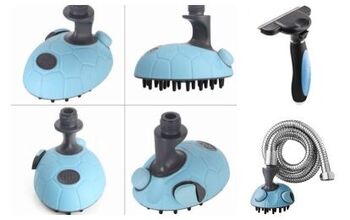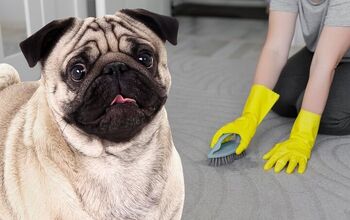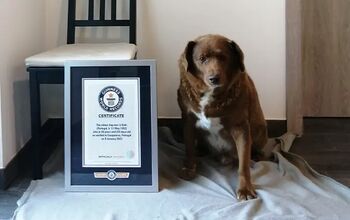Fur-Flying Tips for Spring Shedding Season

What’s up with all the fur?!
Dogs shed fur throughout their entire lives much like humans do: yup, when we see that clump of hair in the shower drain, it’s usually nothing to fret over (unless you have an underlying health problem). For the most part, the average human can lose between 50 to 100 hairs a day. Unless your dog is completely hairless (like the American Hairless Terrier), you’ll see bits of fur scattered all around your home year-round because it’s nature’s way to getting rid of dead hair follicles.
If your dog is often running around and playing outside, he’ll will more than likely develop a layer of thick fur. It’s nature’s way of saying, “Hey, it’s getting cold! Here’s some extra protection.” Later, when the days become longer and less cold, your dog will shed that winter portion of their fur to stay cooler in the warm weather (note: unlike humans, dogs do not sweat through their skin, but through their paws and via panting). And the process goes repeats itself.
Related: Tips For Removing And Keeping Dog Fur Off Your Clothes
If your dog stays mainly indoors, the factors that determine the growth/shedding of their winter coat (longer days and temperature) don’t really apply. This means that indoor dogs, while they still shed because of their hair follicles’ natural cycle (like that of humans’), they won’t grow or shed as much of a winter coat as dogs who live for the outdoors.
Some breeds even have double coats, where the outer layer guards them against freezing temperatures, and they have a soft, thick undercoat to keep them warm. Dogs that have double coats include Siberian Huskies, Shetland Sheepdogs and even little Pomeranians. You can expect these guys to have a lot more fur and in turn, shed much more come spring time.
Tips on Spring Grooming
You should try to groom your dog every day, especially during spring shedding season if your dog has long or thick fur. While this doesn’t really minimize the amount of hair shed, it does mean you can expect less fur around your house (because some of it is on the brush.) It’s best to groom your pooch somewhere outside, as the fur you brush off your dog is most likely going to fly everywhere.
Related: 7 Sticky Static Cling Tips to Stop Fur From Flying
Be sure to consult your veterinarian on which comb or brush is best for your dog’s type of fur. One tool that has been hailed as one of the best when it comes to removing dog’s heavy winter undercoat is the FURminator. It may be a little pricier than most, but with the time it saves you sweeping the floor, you’ll agree that it’s well worth it.
How to Keep Your Wardrobe Fur-Free
My first dog was a Terrier Mix and his curly white fur used to get in every nook and cranny… sometimes I’d find it where it was least expected! It would roll around like tumbleweed whenever someone moved, and they would make every black sweater look grey from afar. Kika, my Chiweenie’s, sports fur that’s quite the opposite: black, short and absolutely tiny. Unlike my Terrier coat, Kika’s fur doesn’t clump into corners or rest on clothing surfaces. Instead, it gets stuck between fabric fibers and although it’s less visible, it’s harder to remove.
The best way to keep fur off your clothes is to keep a tidy home, especially in the spring. This means vacuuming often (both the floors and the furniture) and washing your pet’s bed weekly. Wash and dry your clothes before you do the same to the dog bed, blankets, and toys; always remember to use a dryer sheet (reduces state cling and hair); and keep your dryer vents clear of lint and hair.
The easiest way to remove fur from your clothes is to use a clothes brush or lint roller with you at all times. If you don’t have any of that at home, simply cut a piece of duct or packing tape and pretend you’re waxing your clothes. When you’re not wearing your favorite outfits, put them away ASAP in a drawer or closet, where your dog’s hair is less likely to fall. If all else fails, you might have to change your dressing habits; if your dog’s white/golden hair is everywhere, wear less black or navy blue, as light-colored fur is more noticeable on dark-colored clothing.
What to do with all that extra fur…
Now that you have enough fur to make another entire dog, what exactly do you do with it? Should you vacuum it up or throw it in the trash like normal people do? Nah, that’s no fun! If you don’t like to throw things away, you could learn how to knit a sweater with the discarded fur.
Or recycle it by incorporating the fluff into pieces of jewelry and art, just like the HairWork Society does.
And saving the best until last – take notes from this genius pooch parent and the 101 things he does with German Shepherd Mowgli’s excess fur… or should I say “Express Fur?”

More by Diana Faria























